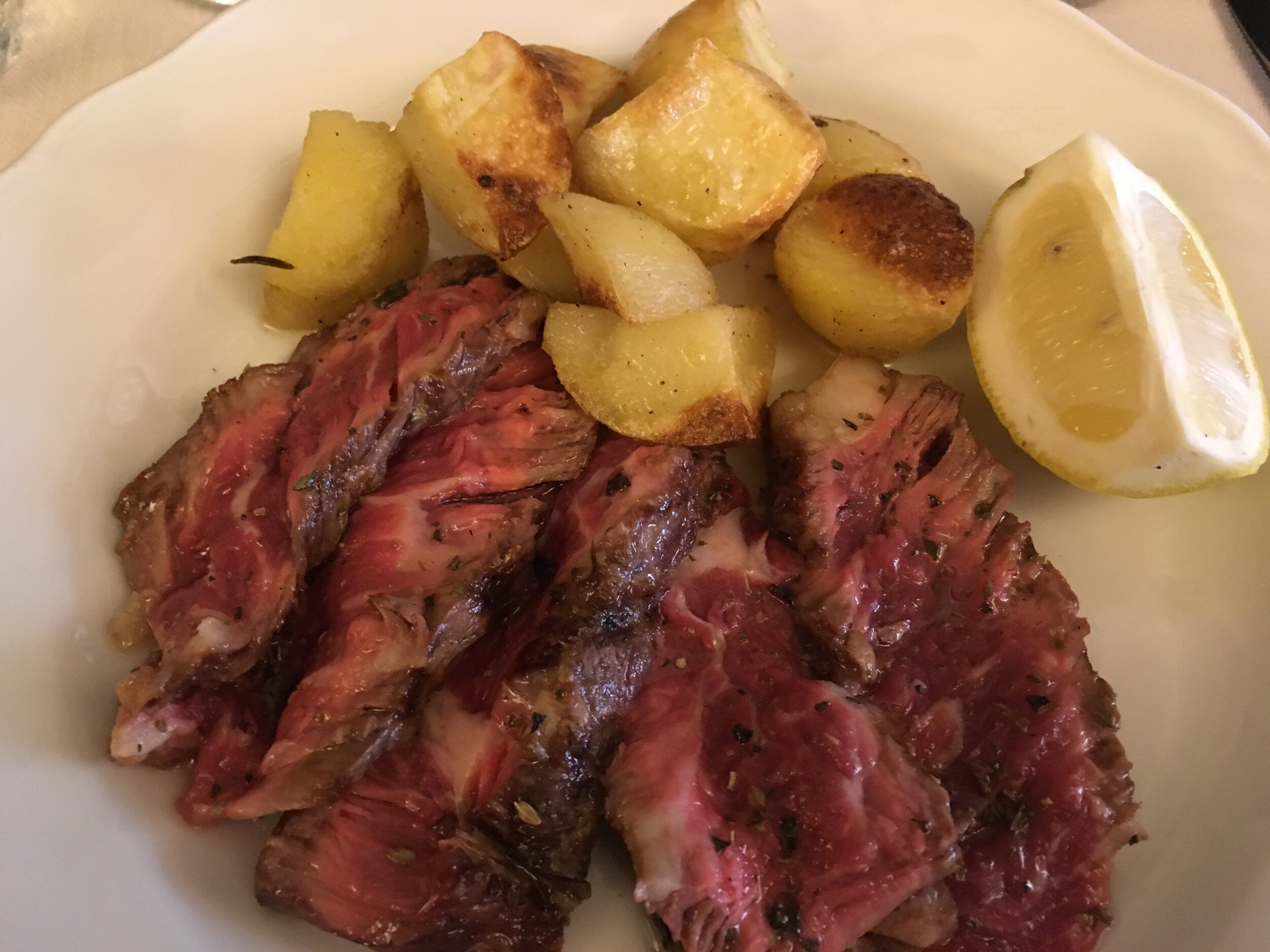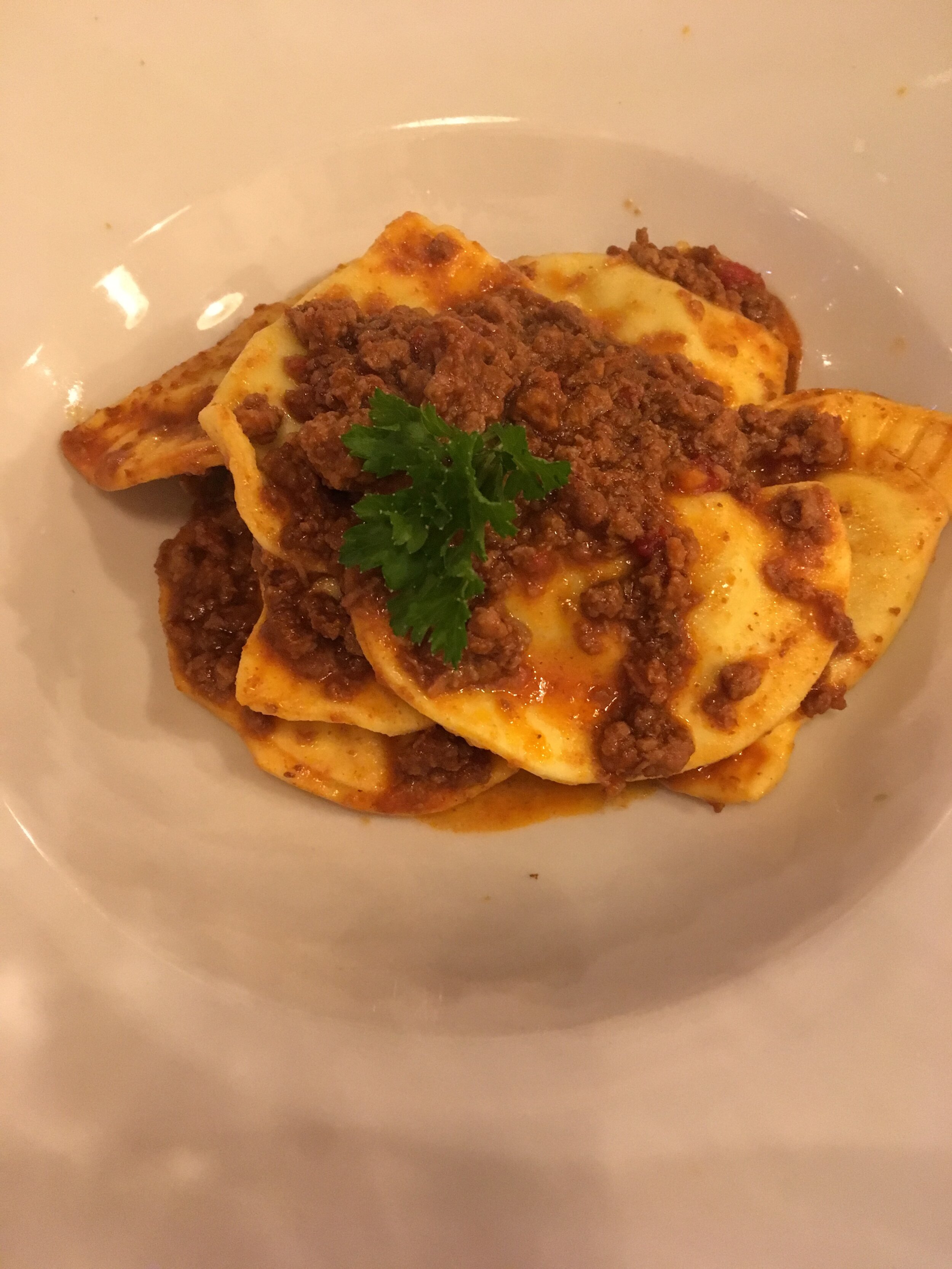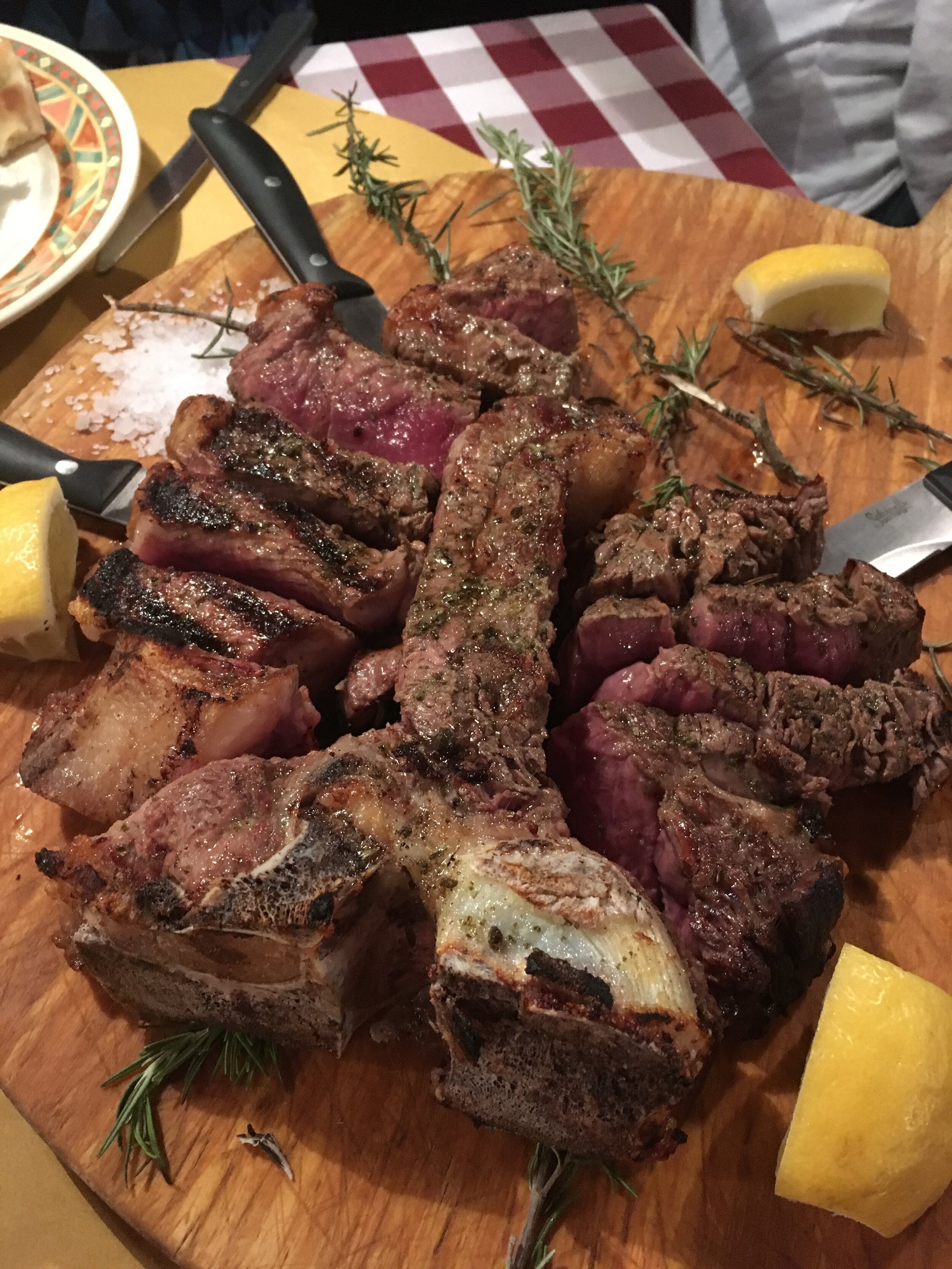Cacciucco: An Italian Fisherman's Stew
One of the things that most surprised me when I first started visiting Lucca is that, while we are only about 30 minutes from the sea, the traditional cuisine here is very meat-based. There is not a seafood market to be found within the centro storico (the historic center of town) and restaurants serve far more meat than fish. I’m not complaining, the meats are fabulous - porchetta (spit roasted pork), tender tagliata (slices) of beef, huge grilled Tuscan steaks, thin but oh-so-flavorful lamb chops, perfectly roasted chicken, cinghiale (wild boar). Even the traditional pasta of Lucca, Tordelli Lucchese, is a meat filled pasta topped with a meat sauce.
A shellfish carbonara at Osteria Via San Giorgio, Lucca
There are some fish dishes to be found. The seafood carbonara at one local osteria is a particular favorite of mine, but these dishes are definitely in the minority.
I’ve searched for why this meat preference is so strong and the only answer I’ve found is that in times past wealthy people ate meat and poor people fished, cooking with whatever they caught. Lucca was historically a very wealthy town, so meat was plentiful and nobody fished.
That fish is less common here made it all the better when, on a recent chilly and windy March day, I walked past a restaurant take-out window advertising a daily special of cacciucco. Cacciucco is a fisherman’s stew with origins in the areas along the coastline of Tuscany which includes the port towns of Viareggio and Livorno. It is a bit like cioppino, the fish stew brought to San Francisco by Italian immigrants. However, cacciucco’s ingredients are more of a poor fisherman’s mix compared to the more expensive ingredients found in cioppino (crab, shrimp, scallops).
Cacciucco - thick with seafood and covered in a fragrant broth
Of course there are legends surrounding the beginnings of cacciucco. It is said that the widow of a drowned fisherman made the first cacciucco from odds and ends of fish collected by her children from local fisherman. They took the mix of fish home and the mother cooked them (the fish, not the children) in a broth which she then spooned over day old bread. The neighbors caught the delicious scent and before long the dish became a local favorite. One whiff of a good cacciucco made me a believer in this legend! Another legend about cacciucco is that, to be authentic, it must contain 5 different types of fish - one for each C in the word cacciucco.
The recipe begins with a broth made from fish parts and white wine. To that base are added spices, tomatoes, and a mix of fish. The fish can include white fish along with octopus, mussels, cuttlefish, calamari, red fish, and scampi (or whatever else is available).
A mix of local seafood makes cacciucco a type of cucina povera (poor man’s food)
The ingredients vary from city to city and there is of course disagreement about which city makes the best version. According to one article I read (La Repubblica, 2010) the differences between a cacciucco in Viareggio versus one made in Livorno is that the Viareggio version is lighter and a bit more refined. There is no garlic and the fish is boned and filleted. In Livorno the dish is more rustic, including garlic and a soffritto (a sauté of onion, celery, carrot). Also, in the Livornese version, the fish is in chunks, including some pieces with bones.
If the sight of tentacles, scampi with heads, and fish bones bothers you then this may not be the dish for you. As for me, those little tentacles are tender and tasty and all the bits of fish are wonderful. Even better is mopping up the broth with a good piece of rustic bread.
If you’ve been watching the CNN program “Stanley Tucci Searching for Italy”, you may have seen him eating a cacciucco in Livorno during the Tuscany episode. That was definitely an upscale version, with the addition of lobster. Rather than mopping up the sauce with bread they tossed the leftover sauce with some pasta. Something to try!
This is not a dish I’d ever attempt to make at home. But I think I am going to have to make a pilgrimage to both Livorno and Viareggio as soon as possible to compare the two versions, all in the name of culinary research of course.
With restaurants closed to seating due to COVID restrictions, these take out windows are becoming more popular. This one is in front of the restaurant Nonna Clara in Lucca. Along with the street food some items from the regular menu are available to go, including this day’s special of cacciucco .







